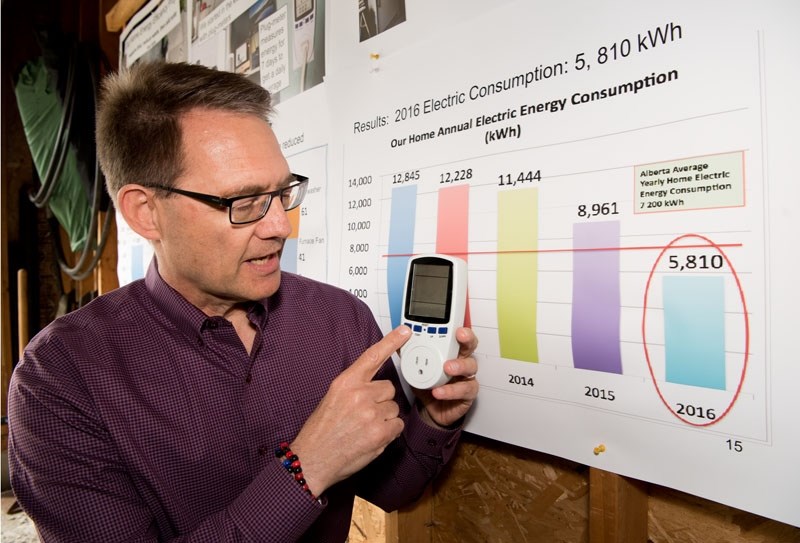Ever sat down and looked at your home's power consumption? Deer Ridge resident Ron Kube did two years ago, and boy, was he in for a shock.
The University of Alberta computing science professor found out that he, his wife and two kids were somehow using nearly 13,000 kilowatt-hours of power each year – well over the 7,200 kWh/yr for the average Alberta home.
"Why are we using so much?" he asked.
Kube used a watt meter he ordered online to track the power use of everything in his house. Two years later, and he's cut his family's power consumption to just 5,810 kWh a year and put 9 kW of solar panels on his roof.
The Kube home now produces about three megawatts more electricity than it uses each year – enough to drive an electric car about 20,000 km, Kube said.
That success story has made the Kube home the latest addition to the Edmonton Eco-Solar Home Tour, which runs next weekend.
The tour is a free event that gives residents a chance to check out 18 of the most energy-efficient homes in the Edmonton region, said tour president Andrew Mills.
"Your home is how you personally deal with the environment," he said, and making it more efficient reduces pollution and saves you money.
This year's tour features five homes that produce zero net greenhouse gas emissions a year yet cost less than market price, he noted. Other sites feature air-source heat pumps, co-generation, Canada's first net-zero church and an electric car showcase.
Kube's home is a great example of what you can do just by measuring your power use, Mills said.
"It's always cheaper to not buy the power in the first place."
Savings for cheap
Kube said he invested about $1,000 to make his home more energy efficient and another $22,000 for the solar. He expected to earn all this back in savings in about seven years.
Kube's watt meter revealed that his home's biggest power sucker was, to his surprise, lighting. His dining room table was lit by eight 100 W incandescents, for example, while his basement had multiple 1,500 W halogens. He swapped all 80 of his home's bulbs with LEDs, sharply reducing his power use for lighting.
Kube also discovered that his old beer fridge was drinking seven per cent of his energy bill – a problem he solved by unplugging it. Power vampires in the entertainment system (which drew electricity even when shut off) were slain through use of a power bar. An energy monitoring system (which shows the home's power use in real time on a screen in the kitchen) helped him isolate other inefficiencies, such as his habit of filling the kettle up all the way when he didn't need that much water.
"Probably one of the biggest areas we saved was in the kitchen," Kube said.
To reduce use of their inefficient electric stove, Kube now uses a toaster oven for most of his small jobs and an induction stove for others. He also breaks out a solar oven he made from cardboard and tinfoil on occasion.
He also got a pressure cooker. Whereas a slow cooker needs 1,224 W and six hours to make lentil soup, this baby can do it in 23 minutes with 538 W.
"I love this thing! I can make so many things in this thing so quickly!" Kube said.
Kube said his family was now working to reduce its heat energy use. They've upgraded all their windows to triple-pane, put in a programmable thermostat and are looking to get an air-source heat pump (a super-efficient radiator).
The first step to saving energy is to measure what you use, Kube said. The next is to take simple, cheap steps to reduce your use – steps the province's rebate programs have made even cheaper.
"What does it take to replace a light bulb, especially if the government is giving you light bulbs for free?" he said.
The tour runs June 3 and 4. Visit ecosolar.ca for details.




